
Magnify & Measure Collecting Precise Information


Magnify & Measure Objectives
-
Describe the magnification possible with hand lenses and microscopes.
-
Explain why light sources and stains are important in magnification.
-
Recognize and apply different forms of measurement used in animal research.
When you think of a biology lab, what is the main piece of equipment you expect to see?
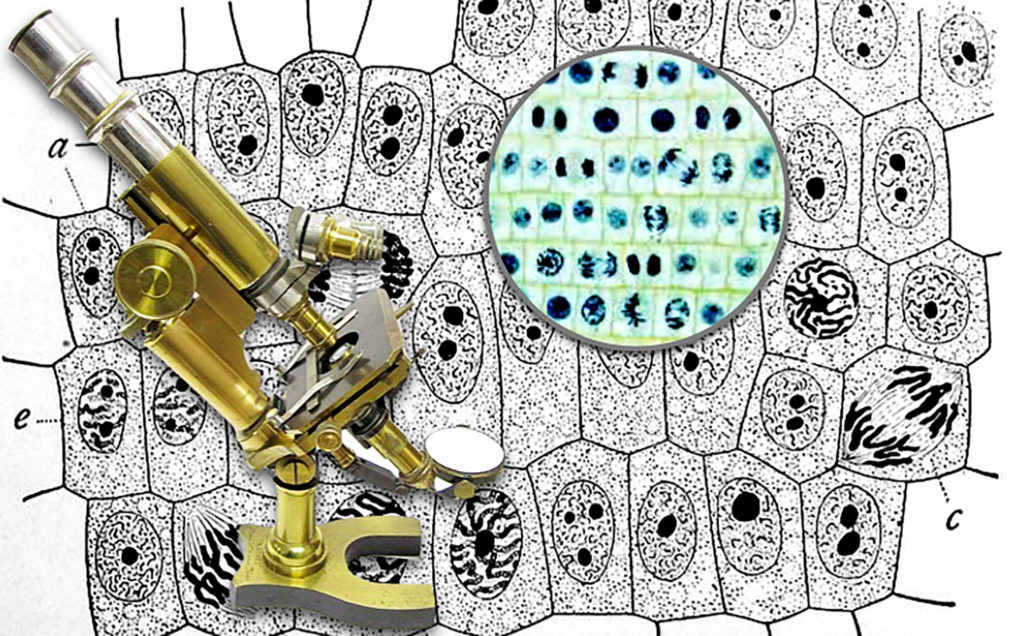
The earliest optical or “light” microscopes date back to the seventeenth century, magnifying specimens beyond the range of normal human vision.
Early magnification was approximately 10x, or ten times the unaided eye, now microscopes that shine light through specimens can magnify over 1500x and electron microscopes developed in the 20th century magnify 200,000x. Most of the research topics discussed in this course requiring microscopic examination, or “microscopy,” would use an optical “light” microscope.
A bright light shines through a thin tissue of cells and finely ground glasses magnify the image. Both the eye pieces and specialized lenses called “objectives” magnify. From this image, if you have a 10x eye piece and a 10x objective, what is the total magnification?
answer: 100x
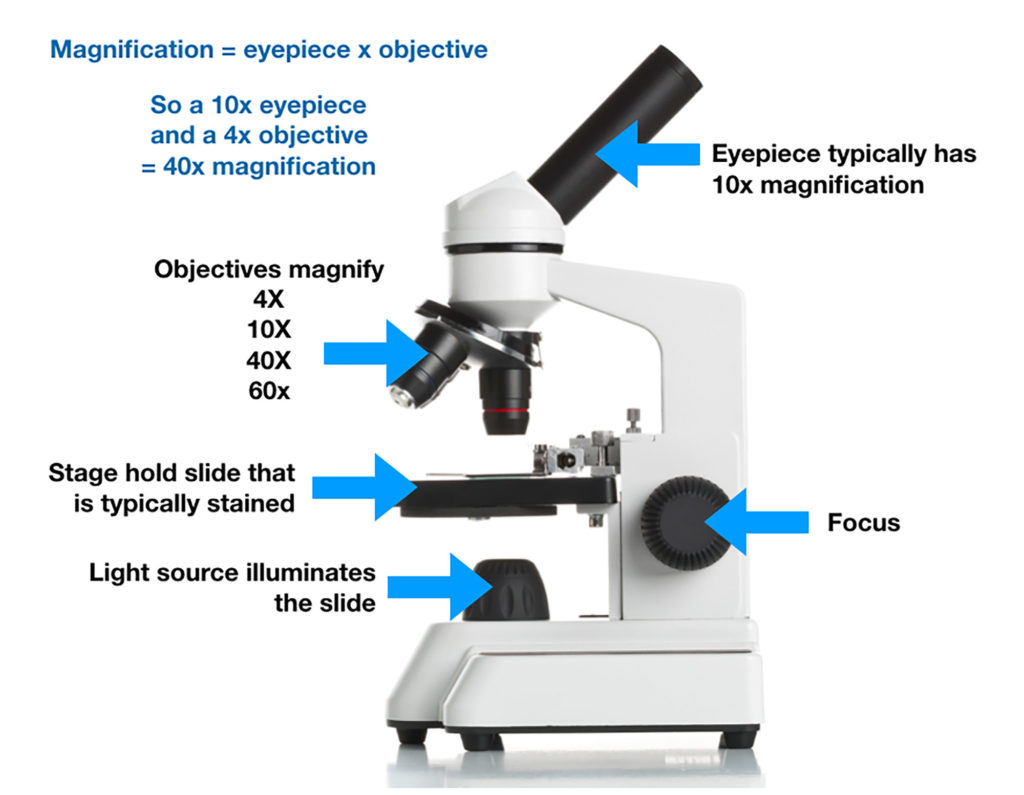
The bright light can make specimens look clear and colorless, so pigments or stains are often used to color certain parts of cells and the tissues they form.
Here are a few basics on glass lenses and light sources in microscopes, as well as staining of animal tissues in microscope slide preparation
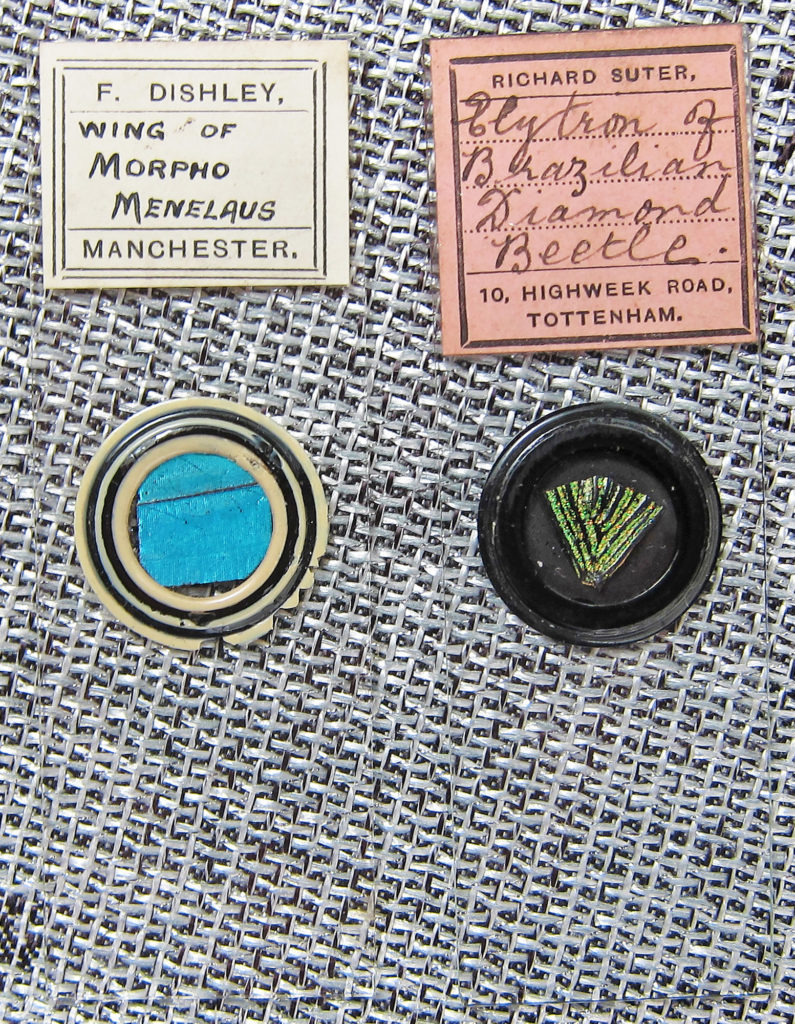
Antique microscope slides contain specimens of rare, sometimes extinct, organisms. They were also frequently prepared with chemicals that are now known carcinogens (cancer-causing agents), and are no longer used. Unfortunately the high quality coloring and contrast produced by these stains has not been fully replicated.
Stains can turn clear cells that are difficult to read into powerful sources of information. Using a medical example, women get regular pap smears to detect possible abnormal growth in the cells lining the cervix. These cells are colorless under bright light until stain is added.
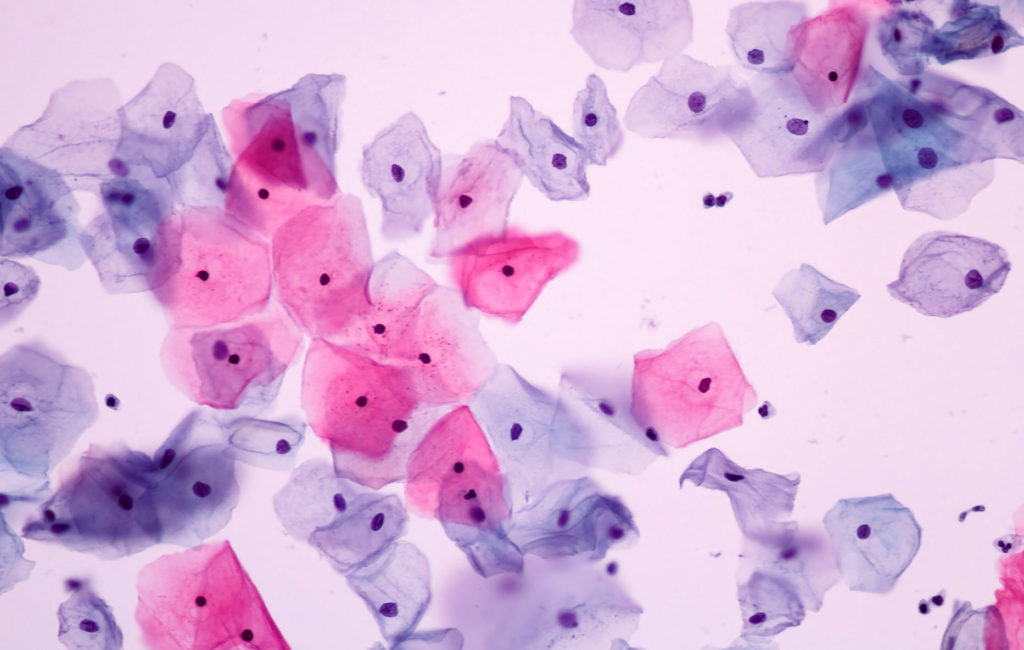
Normal Cells 200x
The normally colorless cells are staining shades of pink and purple, which indicates different stages of the cells. The pink were on the surface being sloughed off, the purple were a bit deeper in the lining tissue. The are all about the same size with similar size and shape nuclei (dark purple dots).
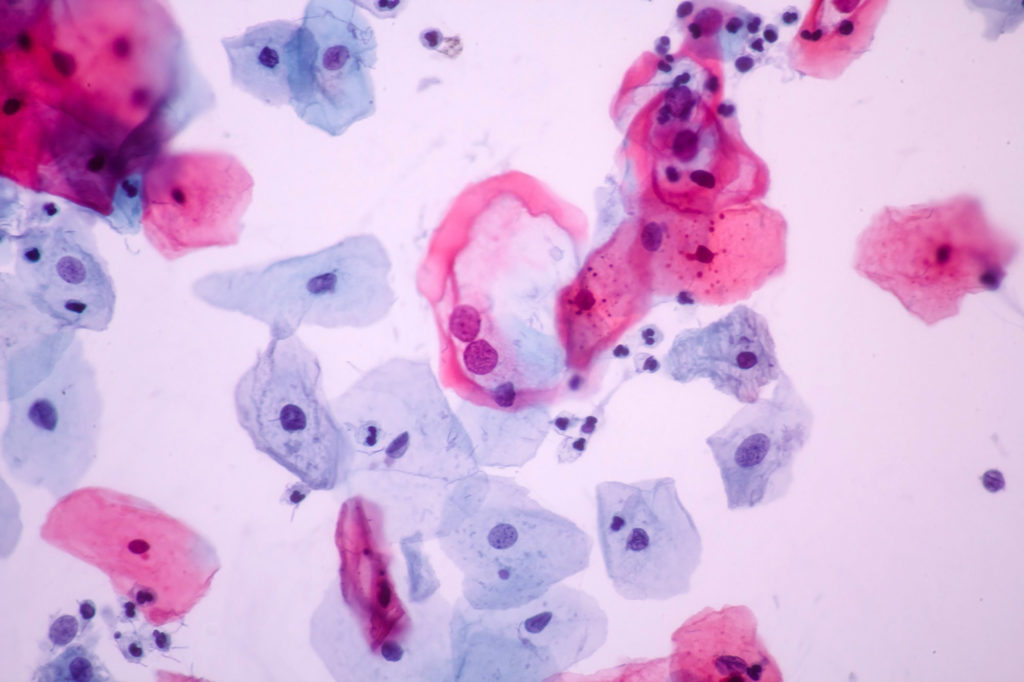
Abnormal Cells 200x
At first this may look similar, but look at the different colors and sizes of the nuclei in the cells. They are especially different in the bluer cells that are deeper in the cervical lining, This indicates abnormal growth and could not be easily detected without stains.
Following Darwin’s success aboard the H.M.S. Beagle, a science expedition was planned aboard the H.M.S. Challenger in 1875. The mission in part was to discover whether life existed in the depths of the oceans. Without light, it was thought that life could not exist.
The ship had a dredging mechanism to pull samples out of deep submersed ocean soils.

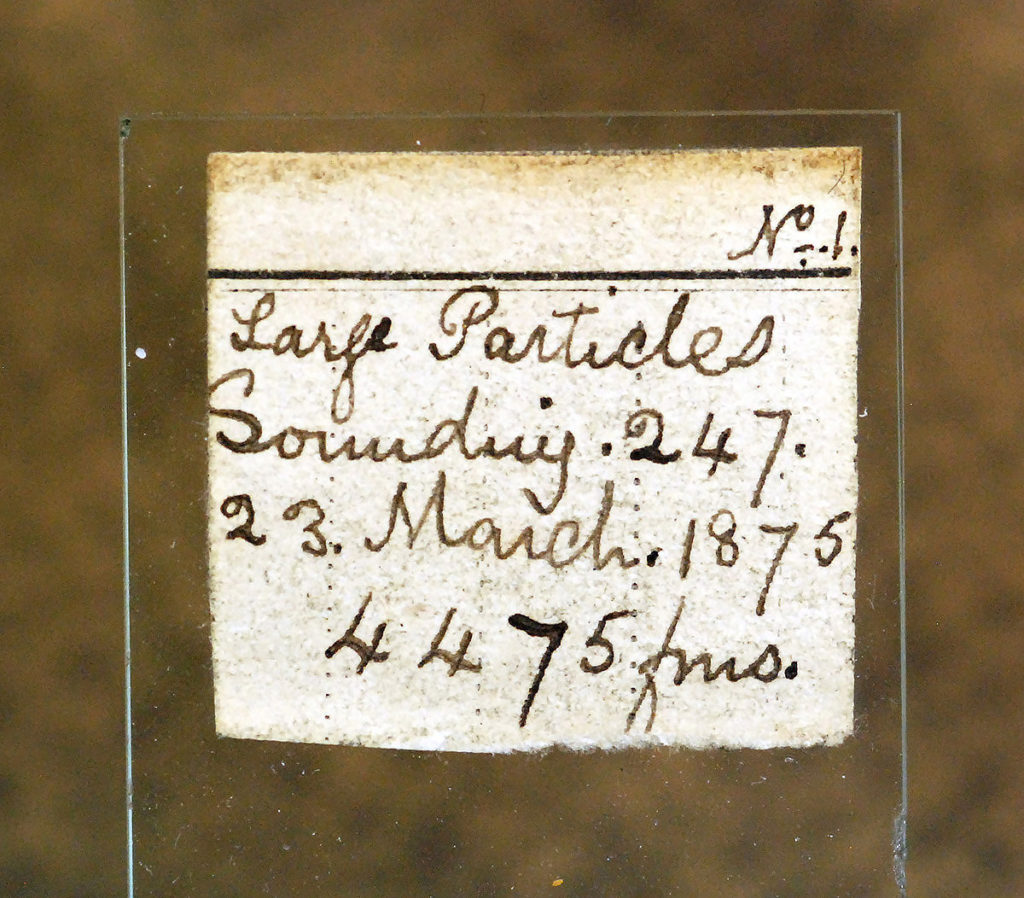
We have been fortunate enough to obtain two microscope slides prepared during this research voyage.
This sample was taken at 4475 fathoms, about 26,000 feet beneath the ocean surface, from an area of the Pacific Ocean now known as the “Challenger Deep,” named after this ship.
They are not stained, this is what the researchers saw on their own microscopes aboard the ship.
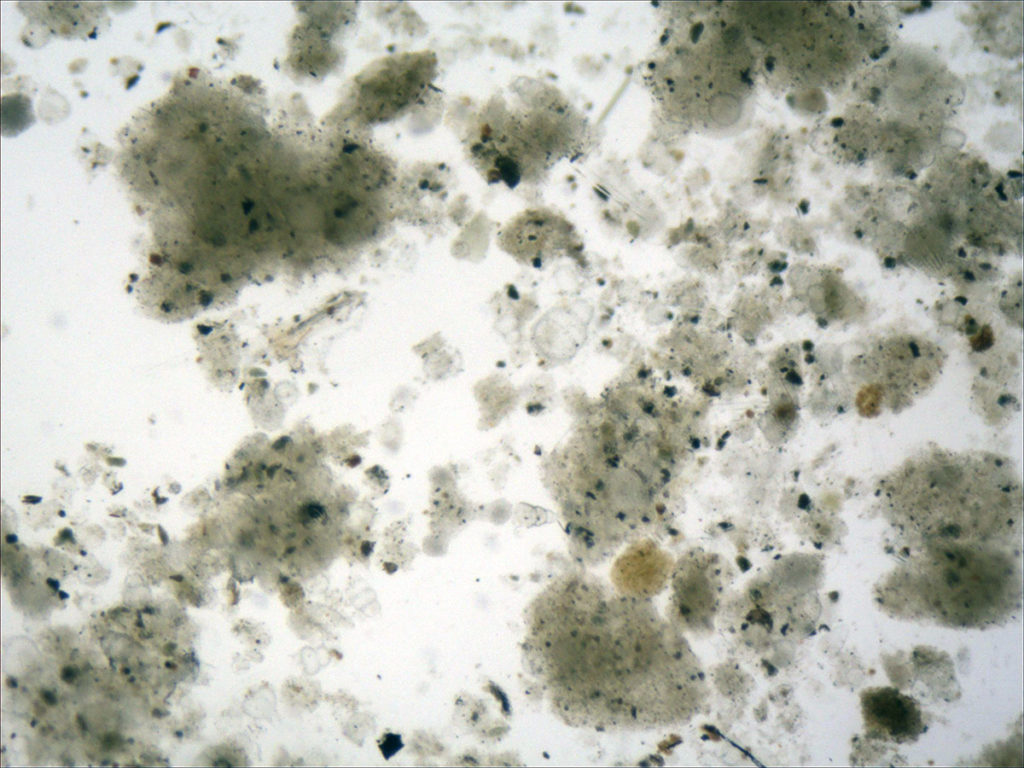
45x
At this lower magnification, the colors and clumps suggest the organization of organisms.
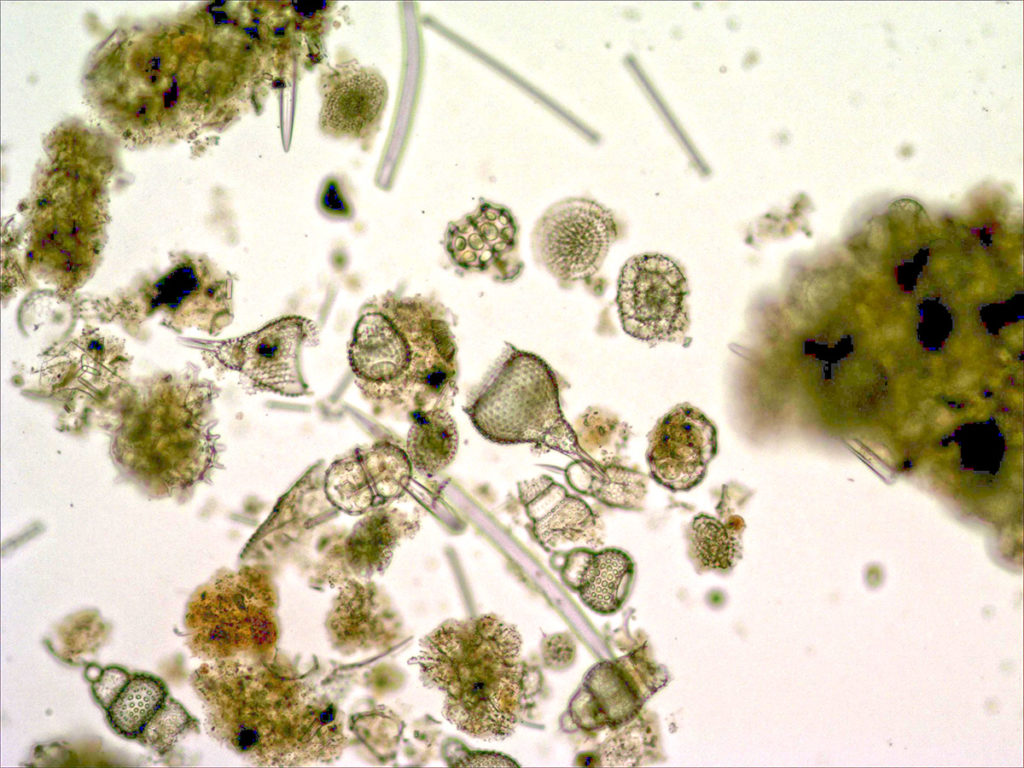
100x
There are definitely organisms, including algae (green), other protists, and small animals.
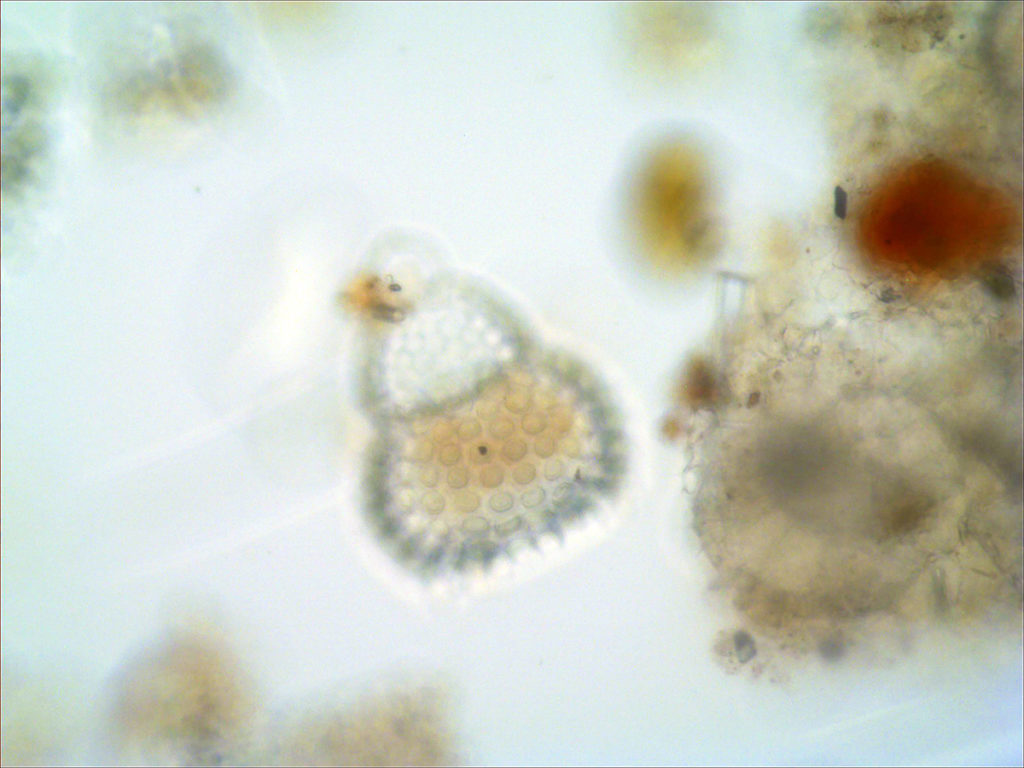
400x
A small protist, from the Kingdom that gave rise to animals and remains abundant in aquatic habitats.
Microscopy has played a critical role in the advancement of many fields, including medicine
You don’t need an expensive microscope to observe organisms. Here we are using a phone to magnify.
Technology not only assists scientists with magnification, it also plays a critical role in measurement.
Measurement
Measurement is a basic activity that at its simplest indicates “more or less,” and many animal species other than humans have a concept of amount. Humans take this further with technology that enables detailed study of organisms and their habitats.
Measurement is something we do so frequently and effortlessly, it is easy to take for granted. Think of two different measurements you have already used today.
Technologies have improved the precision and range of measurement

Time
Atomic clocks can now measure to an attosecond, that’s 10 to the -18 seconds!

Mass (weight)
A microbalance can weigh a millionth of a gram. Huge masses, like an asteroid, can be extrapolated from various forms of satellite data.

Length
The smallest length, the “Planck length” is less than the size of an atom and measured by movement of light in a vacuum.

Temperature
A variety of probes can measure temperatures in extreme conditions, including Martian surface temperatures.
Different field utilize different measuring systems, here are measuring systems related to this course’s topics.
Measurements used frequently in animal research
Species Classification
The specific characteristics that distinguish a group of interbreeding organisms. For example, cichlid fish have behaviors that make it unlikely to breed with other species in the same lake.

Population Density
The number of individuals of a species in a given area. For example, population density of a bird species would rise if it was given more food.

Chromosome Number
The number of DNA containing structures in most cells of an organism’s body. Chromosome numbers vary by species, humans have 23 different chromosomes.

Gestation Period
The time from sperm fertilizing an egg to birth in a live-bearing (viviparous) animal, For example, the typical gestation period of an African elephant is 645 days.

Biodiversity
The number of different species in a habitat. For example, tropical rainforests typically have higher biodiversity species than grasslands, and grasslands have a higher biodiversity than deserts.

Population Growth
The number of individuals of a species born in a year compared to the number that died in the same year. For example, cockroaches can have a high rate of population growth.

Alleles
Forms of the same gene, or area of DNA coding for a particular trait. For example, there are multiple alleles, or versions of DNA that impact the amount of hair that grows on human fingers.

Incubation Period
The time it takes after an egg is fertilized by a sperm for it to hatch. For example, the incubation period of fertilized chicken eggs is typically 21 days.
Measurements do not always need to be precise to convey important information.
Bengal cats along with many other breeds can rapidly develop diarrhea, especially when young. One way to monitor health is to monitor weight.
Sometimes you have to improvise.

With a continual emphasis on accuracy and predictability, is is easy to overlook the importance of improvising and collecting data by the means you have available.
It’s common to see equipment in the field patched with duct tape, or made to work in some other manner.
Estimation can be a valuable skill in the field.

Stride Length
Walking out lengths, like the approximate size of a study plot is possible if you have measured and calibrated your stride length.

Forearm Length
Another useful built-in measure along with index finger length to get approximate measures of smaller objects when rulers are not available.
in the next section magnification and measurement will be applied to studying microscopic animals.

Check your knowledge. Can you:
-
describe the magnification possible with hand lenses and microscopes?
-
explain why light sources and stains are important in magnification?
-
recognize and apply different forms of measurement used in animal research?




